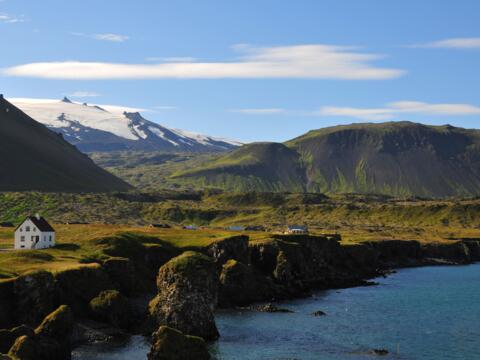Population of Iceland
Iceland and its inhabitants
On your trip to Iceland, you will discover that many parts of the country are deserted. Only dreamlike nature and nothing else. No wonder, just over two-thirds of the more than 320,000 inhabitants live in the Greater area of Reykjavik.
With an average of about three inhabitants per square kilometer, Iceland is the least populated country in Europe. A good four fifths of Iceland are uninhabited, as the majority of the population lives in the lowland plains in the south and southwest and on a narrow strip of coast. Irish monks populated the 103,000 km2 island in the 9th century. Shortly thereafter followed by Vikings from Norway under the leadership of Ingólfur Arnason, who built the first settlement near the present-day Reykjavik to settle permanently here. It was him who gave the name ‘Smoke book’ - Reykjavik to a bay just west of the first settlement.
Population numbers are shrinking
Until the 14th century, trade in Iceland was in Norwegian hands. From the 15th century, the English and Danes also rose. They discovered a new, very interesting commodity - fish. However, this plunged many Icelanders into ruin, since the food for self-consumption was very scarce and expensive.
In addition, there was the Black Death and a smallpox epidemic that killed tens of thousands of Icelanders. In a census at the beginning of the 18th century, about 3,000 of the 4,000 farmed farms were empty. The Icelandic people had to live through many torments. The eruption of the Laki Crater between 1783 and 1784 resulted in a large famine in Iceland, where thousands of people lost their lives. Nearly a hundred years later, in around 1870, many Icelanders emigrated to America. At that time, there were only three cities in Iceland, where five percent of the population had lived.
Recovery in Iceland
Around the turn of the century, Iceland experienced a rapid recovery. Industrial companies emerged and the fishing was expanded enormously. More and more people moved from the countryside towards Reykjavik. The population has doubled from 47,000 to 79,000 within 100 years and the population has been increasing year by year.
...for travelling to Iceland
The growth rate of the population in the last 10 years is 1.7 percent in Iceland. The average life expectancy for women is 83.1 years for men at 79.2 years. The ethnic groups consist to 94 percent of a mixture of the descendants of the Nordic and Celtic settlers. About 80 percent of Iceland's population is Protestant.
It doesn’t matter if you decide for an Iceland car rental trip or a guided trip through the land of the elves. We ensure that you also have contact with the Icelandic population. Whether you are a guest in a charming guesthouse or staying with an Icelandic horse breeder or living in a secluded fjord, you will find out just how hospitable and cordial the inhabitants of Iceland are!



